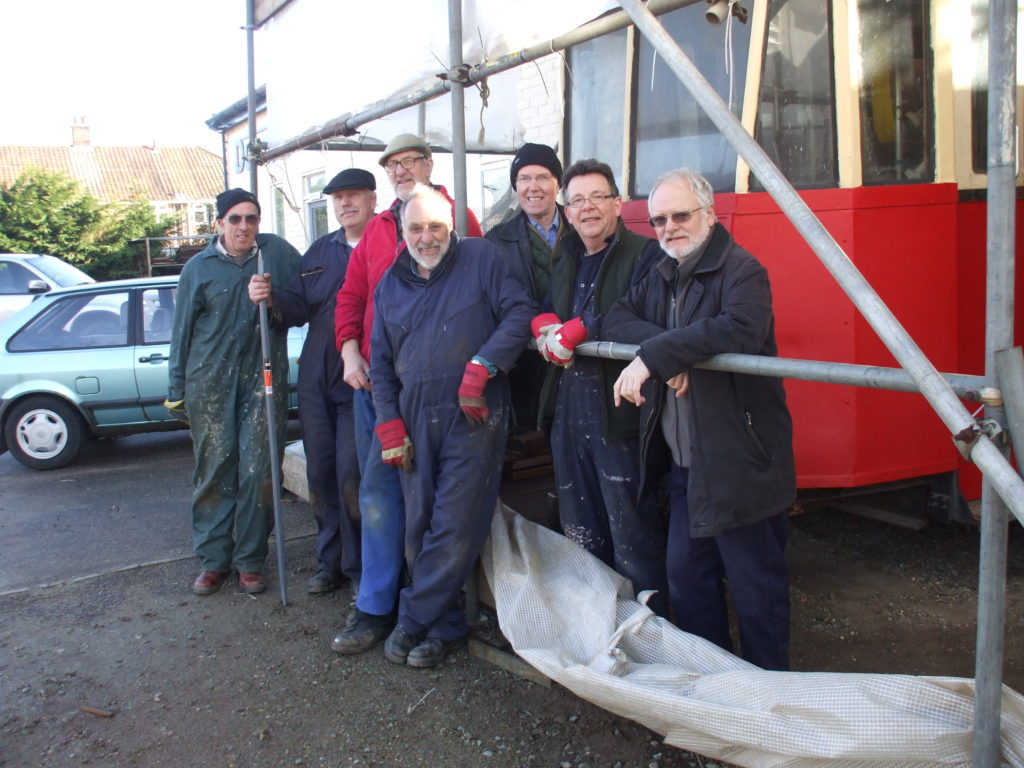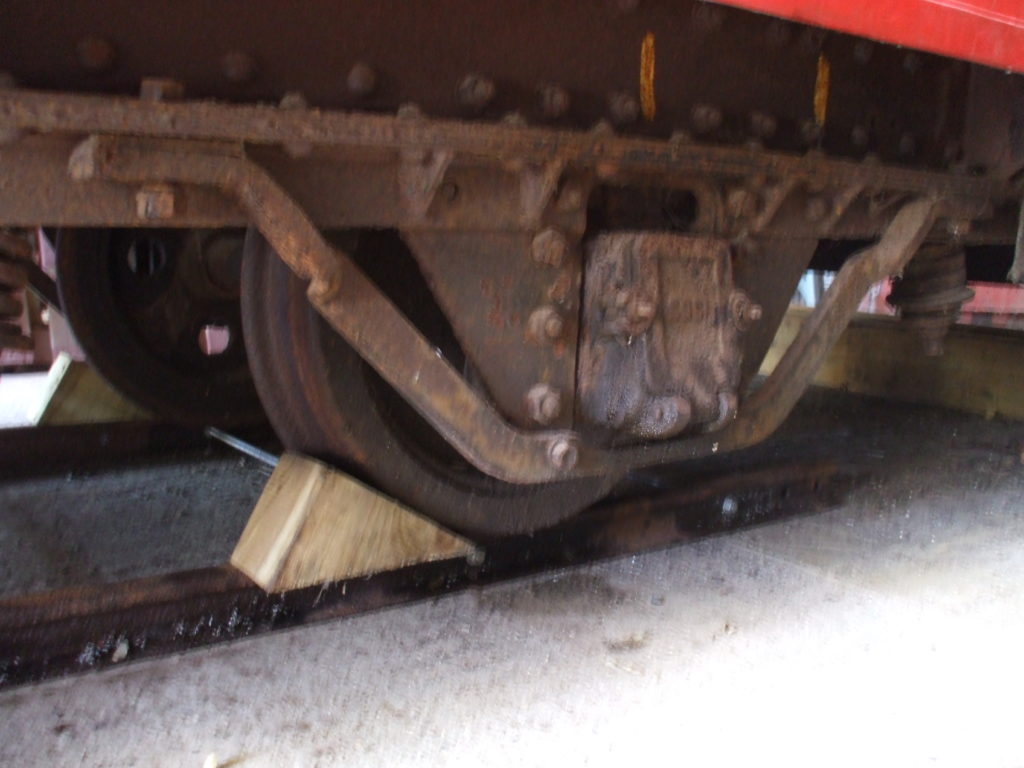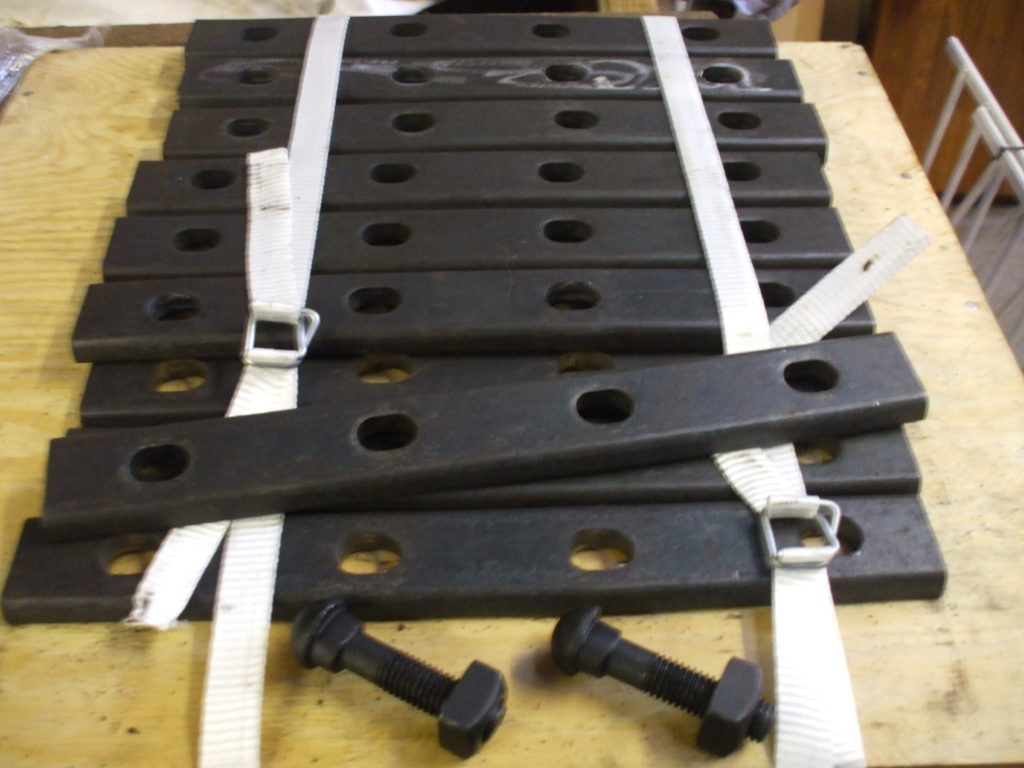
On Wednesday February 5th, after a great deal of preparation, we
lifted Coach 7 off its blocks, and lowered it onto a panel of Southwold
Railway rails.
That sounds quite simple, doesn’t it?

But it wasn’t, very. Bernie brought his mighty hydraulic jack – we had timber for packing – and the two panels were bolted together ready. We had cleared out the miscellaneous tat that had inevitably accumulated under the coach over the years. Then the fun started.
A first trial lift (to make sure that the method was sound) was fine. Then another lift allowed for the timber blocks (which were too close) to be moved, thus allowing the rail panels to fit underneath. With a great deal of difficulty (the spaces around the vehicle are very cramped), the rails were inserted under the wheels. But – as the concrete and gravel under the coach was not level – in either plane – one wheel was still too low. So another lift, more packing – that wheel was still too low.
So we moved to the other end. After a gallon or so of tea, we tried
to insert the jack – but the headstock was too low. Cue digging a hole
to lower the jack. Then, when lowered, the headstock was so low that the
jack wouldn’t come out! I won’t bore you with the complete saga – but
after about three hours, the six-and-a-half-ton coach finally settled –
neatly – on its wheels, on the rails.
Bernie, unflappable as always, ensured that we were totally safe at all
times. Our lunchtime sandwiches tasted better for the achievement. The
coach now looks right, and access is easier. It’s ready to be moved –
and the brake gear can be measured and designed.
In the afternoon, we finished the last small section of cream on the roof, cleaned and de-rusted the remaining metalwork behind the saloon seats and inside the Southwold end, and continued with the trial fitting of the panelling, as well as varnishing the panelling we’d already prepared.

On Tuesday, we had our first delivery of materials from GB Rail of South Wales – in this case, sets of new fishplates and bolts. It’s astonishing that Southwold’s 30 pounds per yard rail is still a UK standard. GB Rail are our preferred supplier for rail and fittings for the public railway at Wenhaston (though that will almost certainly be laid in 50 pounds per yard rail) – they were very quick and efficient with this small order.
